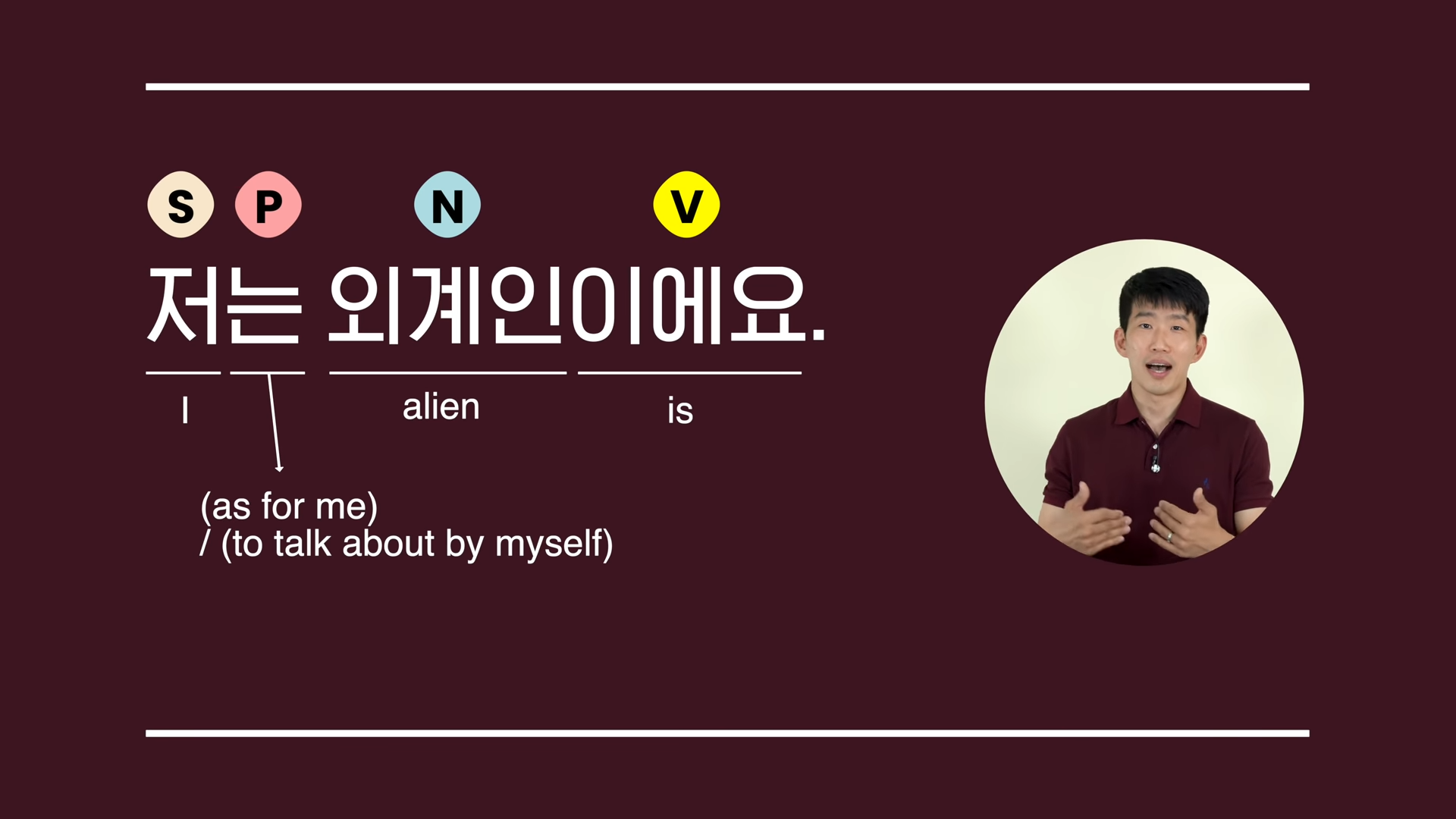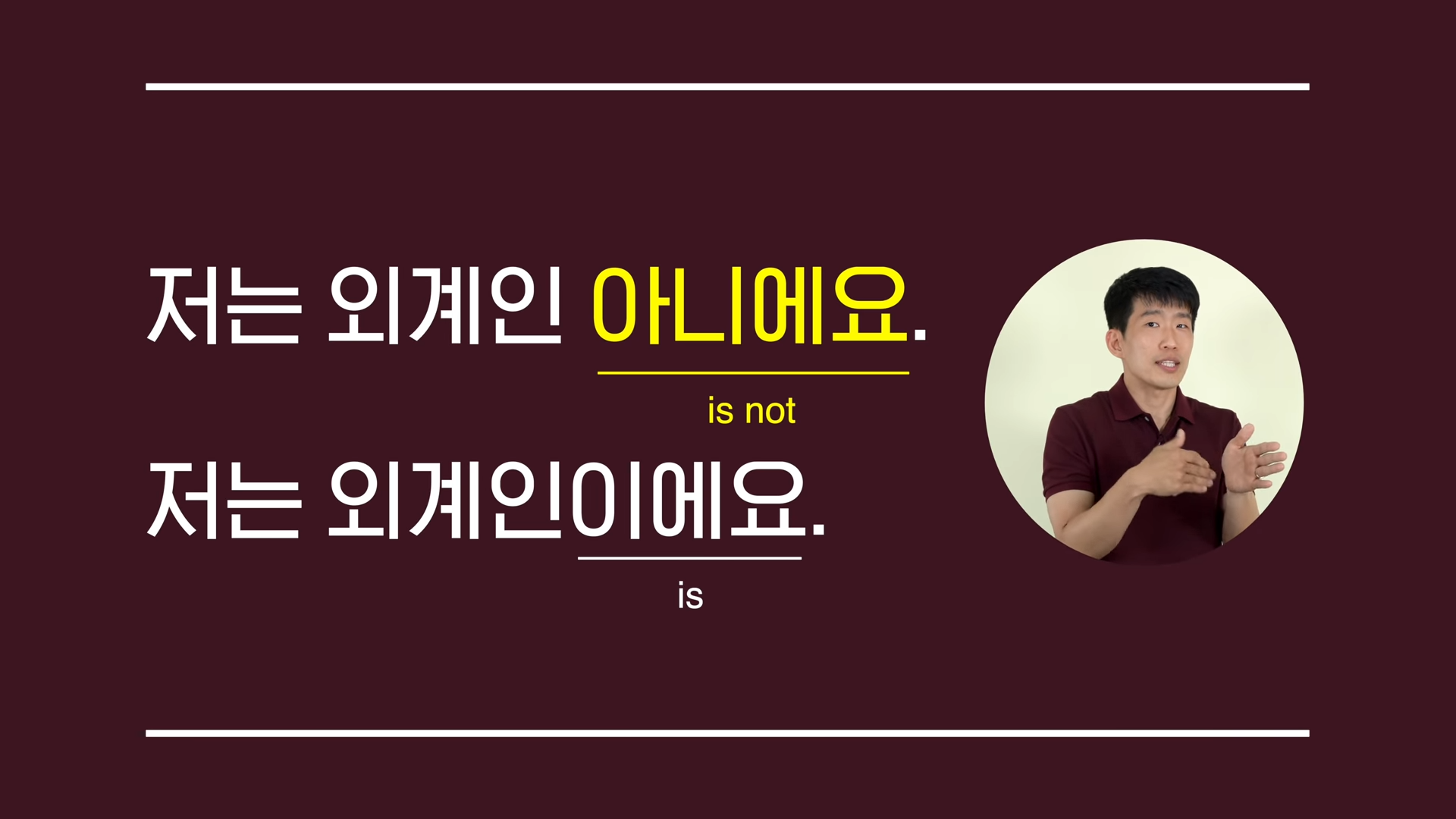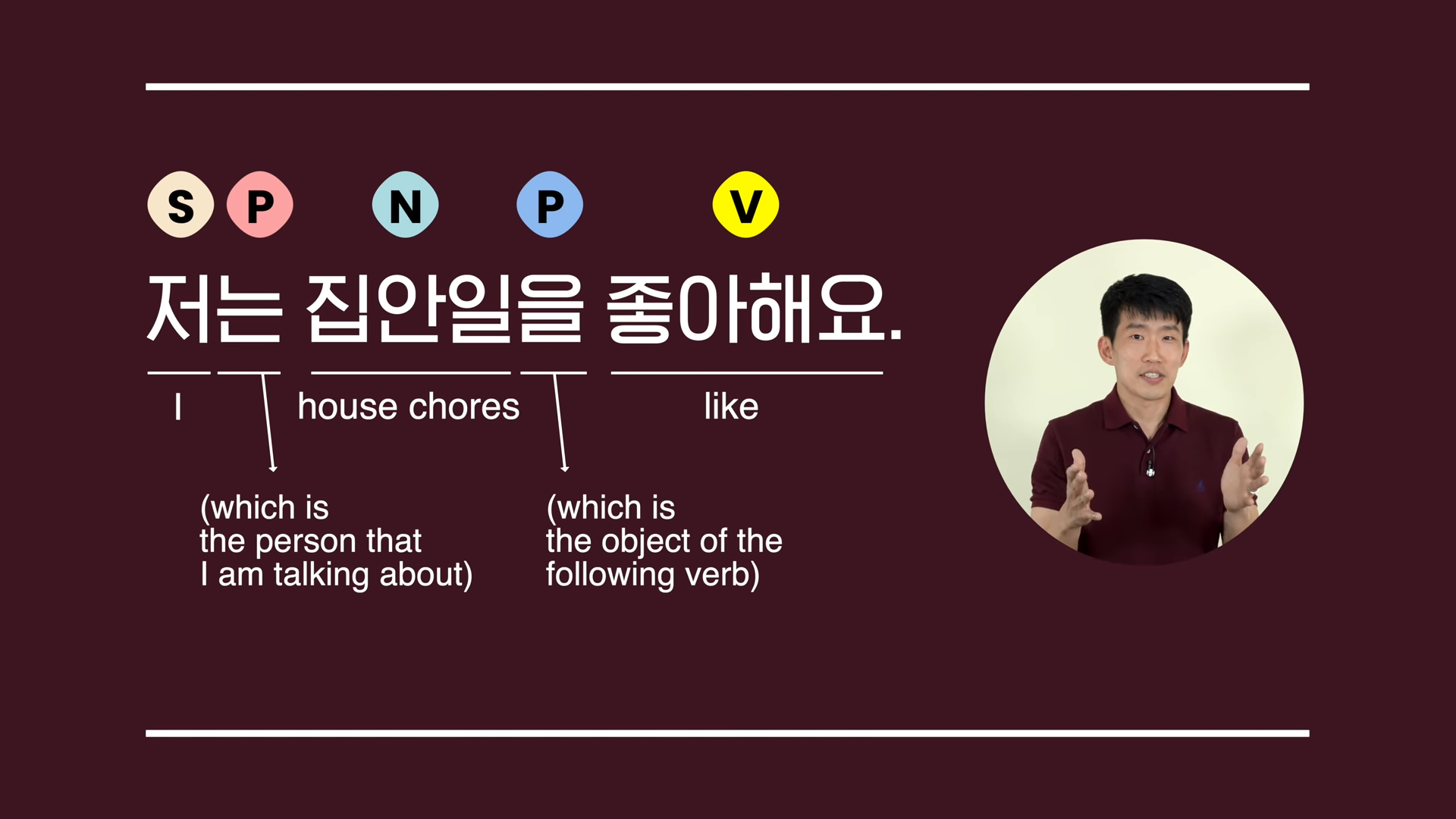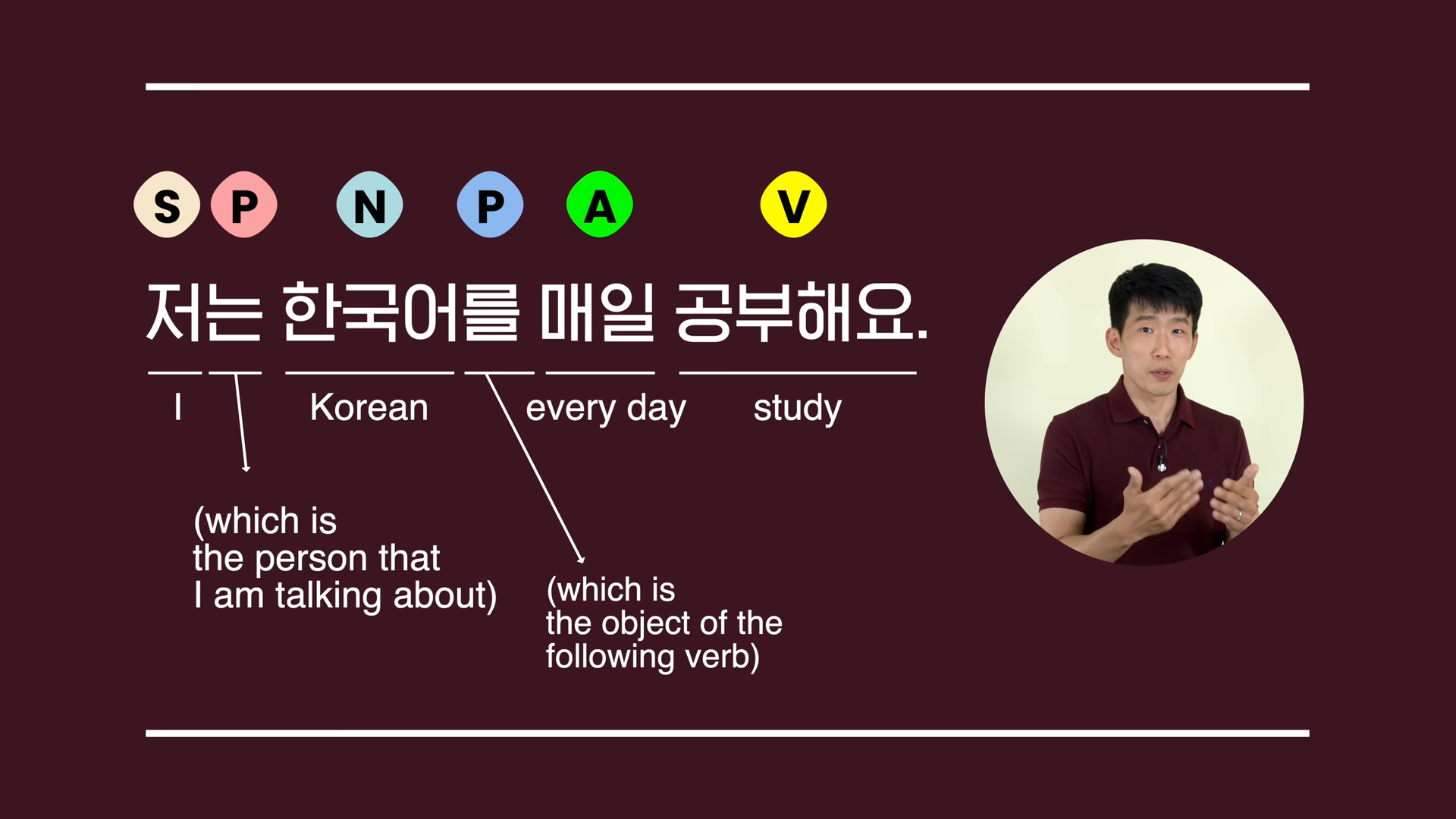Are you just starting your Korean learning journey? One of the most important first steps is understanding how sentences are built. Korean word order is very different from English, but once you grasp the basics, you’ll feel much more confident expressing yourself. Let’s walk through the essentials together!
General Word Order
In English, we often follow a Subject–Verb–Object pattern, as in:
“I am an alien.”

Korean sentences, however, usually follow a different structure. The subject typically comes first. There may be more than one subject discussed in one sentence, but the first word usually emphasizes the sentence. Following the subject, we see a topic marking particle. While we have other videos that cover the purpose of each particle in more depth, note that the topic marking particle comes after the subject. After the particle, the noun being discussed is placed, in this case, the noun being “alien.” A big difference from English is that we see that the verb is actually placed at the end of the sentence in Korean.
Making Negative Sentences

What if you want to say something in the negative? In Korean, the sentence structure remains the same, but the verb at the end changes form to express negation. For example, the Korean equivalent of “is” becomes “is not.”
The verb still stays at the end, but its form signals whether the meaning is positive or negative.
Adding Objects to Sentences
Now let’s make things a little more interesting. Suppose you want to say:
“I like house chores.”

The majority of the sentence structure we just learned stays the same. This time, we are changing the verb to identify appreciation for the noun, which is an object in this case, instead of a descriptive noun in the previous example. Using the verb [to like], we are able to express that the subject enjoys the object.
The only difference in this example is that when the noun is an object, we must also include an object marking particle to separate it from the verb. In this case, the particle [을] is placed after the object word for “house chores' and before the verb.
Present and Past Tense
Tense is another layer you’ll quickly need. Korean verbs change form depending on tense, just like in English. In the sentence “I study Korean every day,” most of the structure stays the same, with the adverb placed before the verb. The only change between present and past tense is the verb itself, which is conjugated to show when the action happened.

Korean sentence structure might feel tricky at first, but don’t worry! You’ll get the hang of it. Begin with the basics: word order, particles, and verb placement. Once those feel natural, move on to negatives, objects, and tenses step by step.
The more you play with sentence structure, the faster you’ll grow in your Korean skills.
Take the first step with us!
At TTMIK, we break Korean down into simple, approachable steps so you can stay motivated and confident. Practice the examples here, and try creating new ones of your own.
Your journey to fluency starts with
building strong foundations.




